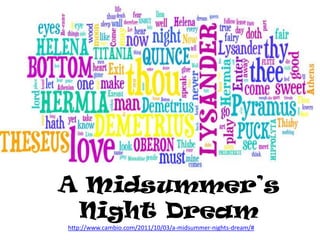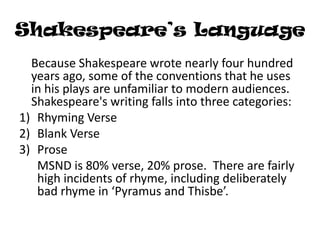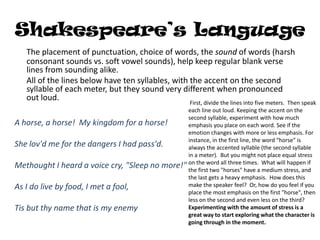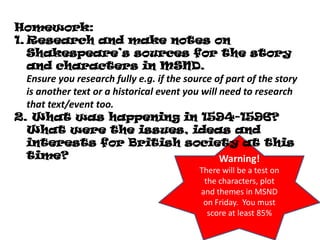1) A Midsummer Night's Dream is one of William Shakespeare's most famous comedies, believed to have been written between 1590-1596.
2) Though set in Athens, the play reflects the pastoral environment and society of late 16th century Britain.
3) The plot involves magic and mistaken identities in the forest outside Athens, revolving around the intertwined romantic relationships between four young Athenian lovers and the fairy king and queen of the forest.





![Shakespeare’s Language
2. BLANK VERSE:
Lines written in a poetic meter but the ends of sentences or
phrases do not rhyme.
Shakespeare's blank verse is usually in iambic pentameter;
which means that there are five measures (pentameters)
and two syllables within each measure, with the accent (or
emphasis) placed on the second syllable. [Note: "penta"
means "five" and "meter" means measure; iambic refers to
where the accent is placed]. Thus, there are generally 10
syllables to a Shakespearean line of blank verse; this is
considered "regular". It is important to realize that
“iambic” is the natural rhythm of the English language. If
you are a native English speaker, you will automatically
emphasize every second syllable.
‘I think I’d like to have a cup of tea.’ Is this the sort of thing we
say every day? Write it out in the same way as the examples on
the previous page. Is it iambic pentameter?](https://image.slidesharecdn.com/beginningmsnd-121024041148-phpapp02/85/Beginning-msnd-6-320.jpg)




